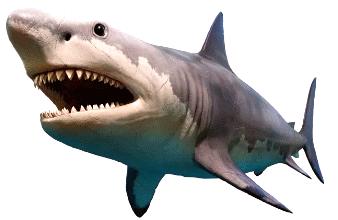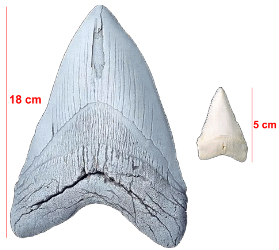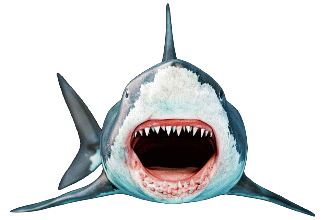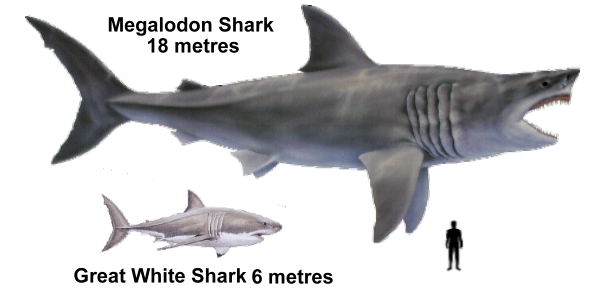  Megalodon was a member of an extinct species of megatooth shark that is considered to be the largest shark, as well as the largest fish, that ever lived. Fossils attributed to megalodon have been found dating from the early Miocene Epoch (which began 23 million years ago) to the end of the Pliocene Epoch (3 million years ago).
Megalodon was a member of an extinct species of megatooth shark that is considered to be the largest shark, as well as the largest fish, that ever lived. Fossils attributed to megalodon have been found dating from the early Miocene Epoch (which began 23 million years ago) to the end of the Pliocene Epoch (3 million years ago). Megalodon was an apex predator that preyed upon fish, baleen whales, and toothed whales such as the ancestral forms of modern sperm whales, dolphins, and killer whales. The young likely sought out smaller prey, while adults hunted larger whales. Mature megalodons likely did not have any predators, but newly birthed and juvenile individuals may have been vulnerable to other large predatory sharks, such as ancestral great hammerhead sharks, whose ranges are thought to have overlapped with those of megalodon. Fossil remains of megalodon have been found in tropical and temperate seas along the continental shelf regions of all continents except Antarctica. During the early Miocene Epoch, large seaways separated North America from South America, and Europe and Asia from Africa and the Middle East; these facilitated movement from one ocean to another. During the later Pliocene Epoch, megalodon's geographic range greatly contracted, and it was extinct by the end of that epoch. Megalodon was the largest fish ever known, based on discoveries of hundreds of fossil teeth, two vertebral columns, and a handful of individual vertebrae. Tooth-shape similarities between megalodon and modern great white sharks suggest that the two species may have been close relatives, and so megalodon likely resembled that species in appearance: a bulky torpedo-shaped fish with a conical snout, large pectoral and dorsal fins, and a large crescent-shaped tail.  Estimates of body length are calculated using the statistical relationship between the size of megalodon's fossil teeth and the teeth and body mass of modern white sharks. This suggests that mature adult megalodons had a length of up to 20-25 metres, and an adult body mass of more than 65 metric tons. Estimates of body length are calculated using the statistical relationship between the size of megalodon's fossil teeth and the teeth and body mass of modern white sharks. This suggests that mature adult megalodons had a length of up to 20-25 metres, and an adult body mass of more than 65 metric tons. The largest megalodon tooth found so far measures almost 18 cm in length, almost three times longer than those of modern great white sharks. In addition, megalodon possessed a ferocious bite; its bite diameter was 3 metres, several times larger than the bite diameter of averaged-sized great white sharks.  Megalodon is thought to have managed its body temperature in a manner similar to that of modern white sharks. It was not exclusively cold-blooded like most fish. White sharks generate heat through the contraction of their swimming muscles, and this heat raises the temperature of parts of the shark's body above that of the surrounding water, an adaptation called regional endothermy (a type of warm-bloodedness). This adaptation might have allowed megalodon to swim and hunt in colder waters, giving it exclusive access to prey in those locations. Megalodon is thought to have managed its body temperature in a manner similar to that of modern white sharks. It was not exclusively cold-blooded like most fish. White sharks generate heat through the contraction of their swimming muscles, and this heat raises the temperature of parts of the shark's body above that of the surrounding water, an adaptation called regional endothermy (a type of warm-bloodedness). This adaptation might have allowed megalodon to swim and hunt in colder waters, giving it exclusive access to prey in those locations.
 |